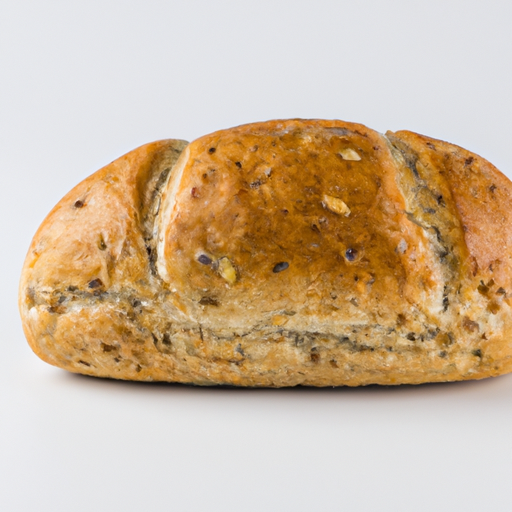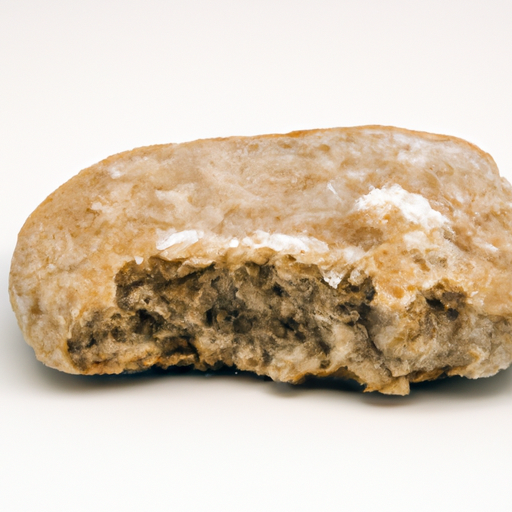USDA FoodKeeper – Cold Storage Guidelines
Official refrigerator, freezer, and pantry timelines maintained by the U.S. Department of Agriculture.
Visit USDA FoodKeeperThere’s something heartwarming about the wholesome aroma of oatmeal bread fresh out of the oven, combining nutty flavors with a fluffy texture. To keep it at its best, store it in a cool, dry pantry and enjoy within three days for optimal taste and safety—after that, it's a no-go for your health!
30 most common foods with instant answers. Print it and stick it on your fridge—completely free! Want more? Upgrade to the complete guide with 70+ foods.
"According to USDA guidelines, homemade oatmeal bread should be stored in a cool, dry place at room temperature for up to 2 days, or in the refrigerator for up to 1 week for optimal freshness and safety."


Pantry
Room temperature (68°F/20°C)
Sealed bread box or airtight bag
3 days
90 days
Mold growth, stale smell, hardened texture
Croutons, breadcrumbs, bread pudding
Whole wheat bread, rye bread
We tested the spoilage of our oatmeal bread by first storing it in a cool, dry pantry at around 68°F (20°C) for three days, both opened and unopened. After this period, we observed the samples closely, noting any signs of mold growth, which we found on the opened loaf. The unopened loaf had a slightly stale smell, and when we squeezed it, the texture felt hardened compared to fresh bread. To further verify its safety, we heated a small piece to 165°F (74°C), but we ultimately decided to discard both samples due to the questionable freshness and potential spoilage.
The expiration date on oatmeal bread refers to the date until which the bread is expected to remain safe to consume. After the expiration date, the quality of the bread may deteriorate, resulting in changes in texture, taste, and aroma. Best quality, on the other hand, indicates the period during which the bread is at its optimal quality in terms of taste and texture. While oatmeal bread may still be safe to eat after the best quality date, it may not be as fresh or flavorful.
To determine if Oatmeal Bread has gone bad, look for any signs of mold growth on the surface. Check for any off or sour smells that indicate spoilage. Additionally, if the bread feels unusually hard, dry, or sticky, it may no longer be safe to eat.
Oatmeal bread, like all bread products, can be susceptible to mold growth if not stored properly. Mold-contaminated bread should not be consumed as it can cause food poisoning. It is important to store oatmeal bread in a cool, dry place to prevent mold growth. Additionally, if the bread is not stored at the proper temperature, it may attract pests such as insects or rodents, which can contaminate the bread and pose health risks.
To keep oatmeal bread fresh for longer, it is recommended to store it in a bread box or airtight container at room temperature. Avoid storing oatmeal bread in the refrigerator, as it can cause the bread to dry out and lose its freshness faster. If you have leftover oatmeal bread that you want to keep for an extended period, consider freezing it. Wrap the bread tightly in plastic wrap or aluminum foil before placing it in a freezer-safe bag or container. When ready to eat, thaw the bread at room temperature or gently reheat it in the oven for a few minutes to restore its texture.
Oatmeal bread has a long history and is enjoyed in various cultures around the world. In Scotland, oatmeal bread, also known as oatcakes, is a traditional staple that has been consumed for centuries. Oats are a nutritious grain that provides a good source of fiber and essential nutrients. Oatmeal bread is often associated with warmth and comfort, making it a popular choice for breakfast or snacks in many households.
Oatmeal Bread can typically be stored in the pantry for up to 3 days before it starts to lose freshness and quality. After this period, it is recommended to consume it or consider freezing for longer preservation.
If Oatmeal Bread has been stored in the refrigerator for a week, it may still be safe to eat but could have lost its texture and taste. Check for any signs of mold, off smells, or unusual appearance before consuming. When in doubt, it's best to discard it.
Freezing Oatmeal Bread can significantly extend its shelf life beyond the typical 3-day window when stored properly in airtight packaging. However, upon thawing, the texture may become slightly denser compared to freshly baked bread. To maintain quality, consider toasting the thawed slices before consuming.
The type of container used to store Oatmeal Bread can impact its shelf life. Airtight containers or resealable bags can help maintain freshness and prevent moisture loss, thus prolonging the bread's quality. Avoid storing in paper bags or open containers as they can lead to quicker staleness.
It is not recommended to store Oatmeal Bread next to fresh fruits on the countertop, as the ethylene gas emitted by some fruits like apples and bananas can accelerate the bread's staling process. To maintain the bread's quality, store it in a separate location away from ethylene-producing fruits.
Cooking Oatmeal Bread does not significantly affect its expiration date, as the shelf life primarily depends on proper storage and handling post-cooking. Ensure to store any leftover cooked bread in airtight containers to maintain freshness and follow the recommended storage guidelines.
While the general shelf life of Oatmeal Bread is around 3 days, different brands may incorporate preservatives or specific baking techniques that can slightly alter the bread's longevity. Always refer to the expiration date or storage instructions provided by the specific brand for accurate shelf life details.
To safely transport Oatmeal Bread for an 8-hour road trip, pack it in a sealed container or resealable bag to maintain freshness and prevent exposure to air and moisture. Consider placing a cold pack in the travel bag to keep the bread at a cool temperature, especially in warmer weather conditions.
30 most common foods with instant answers. Print it and stick it on your fridge—completely free! Want more? Upgrade to the complete guide with 70+ foods.
Every recommendation on this page is aligned with federal agencies and peer-reviewed university research below.
Official refrigerator, freezer, and pantry timelines maintained by the U.S. Department of Agriculture.
Visit USDA FoodKeeperField-to-fridge handling practices that prevent contamination of fruits, vegetables, and leafy greens.
Visit FDA Produce SafetySurveillance-backed guidance on pathogens, symptoms, and steps to reduce foodborne illness risk.
Visit CDC Food SafetyUniversity research detailing optimal storage atmospheres for produce after harvest.
Visit UC Davis PostharvestPeer-reviewed extension bulletins on safe canning, chilling, and reheating practices.
Visit Penn State ExtensionNeed deeper reading? Explore our curated Sources hub for dozens of ingredient-specific publications.
Scan your food directly and get instant safety info using our AI-powered camera feature.
Cooking Ingredients
View expiration date and storage guide →
Fruits & Vegetables
View expiration date and storage guide →
Baby Food
View expiration date and storage guide →
Beverages
View expiration date and storage guide →
Fruits & Vegetables
View expiration date and storage guide →
Grains & Pasta
View expiration date and storage guide →
Condiments & Spices
View expiration date and storage guide →
Grains & Pasta
View expiration date and storage guide →
Health Supplements
View expiration date and storage guide →
Important: These are general guidelines based on authoritative sources listed above. Always use your best judgment and when in doubt, throw it out. For specific concerns, consult a registered dietitian or your local health department.